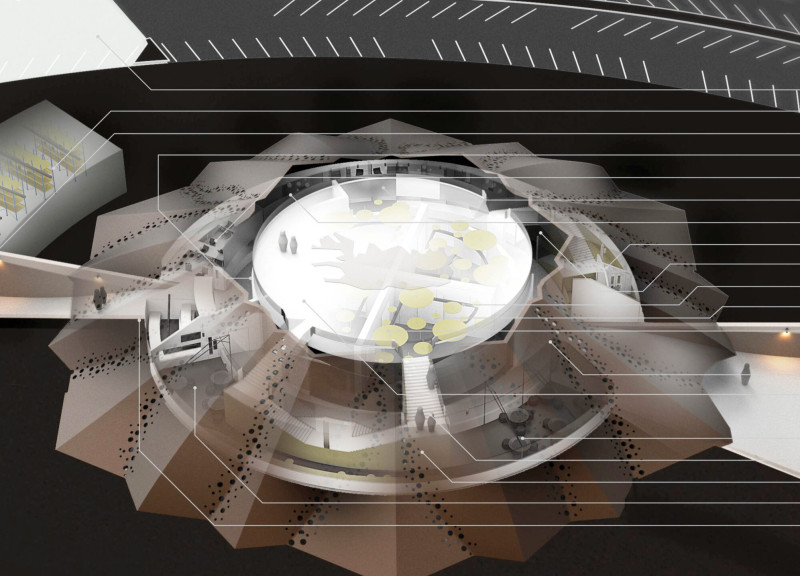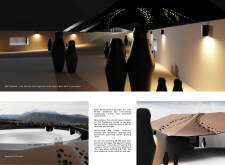5 key facts about this project
Litli Brodir is situated in the Myvatn region of Iceland, designed to engage with the surrounding natural landscape. It accommodates multiple functions, including a cafe and an exhibition space. The design focuses on creating a connection between the building and its environment. Rather than copying the shape of the nearby Hverfjall volcano, the structure uses abstract forms that reflect the area's geological features, making it relevant to its setting.
Form and Structure
The design features an outer skin made of corten steel, which gives the building a unique appearance. This skin includes perforations that allow daylight to enter the interior, brightening the space. The careful placement of these openings softens the heaviness of the building's mass, resulting in a visual effect that resonates with the local landscape.
Interior Spatial Organization
Inside, the layout is planned for ease of movement and interaction among visitors. Functional areas, such as the cafe and gallery, are arranged to promote a welcoming atmosphere. The gallery, located at the center, includes temporary walls that can be adjusted for different exhibitions. This flexibility enhances the usability of the space for varied events and gatherings.
Connection to Landscape
The design thoughtfully positions elements like parking, pedestrian paths, and storage to avoid disrupting views of the landscape. This arrangement allows visitors to appreciate the scenery to the south and east/west. By focusing on these sightlines, the design aims to create a harmonious relationship between the building and the natural surroundings, enhancing the visitor experience.
Material Considerations
Materials, specifically corten steel and polished white lava stone, serve functional and aesthetic purposes. Corten steel is durable and can withstand Iceland's weather. The polished lava stone adds a touch of local character, strengthening the connection to the region's geology. As light moves across the facades throughout the day, it creates interesting textures and patterns, making the space engaging from both inside and out.
The building's relationship with the landscape is evident in the way it interacts with light and shadows, providing a constantly changing visual experience for those who encounter it.






















































